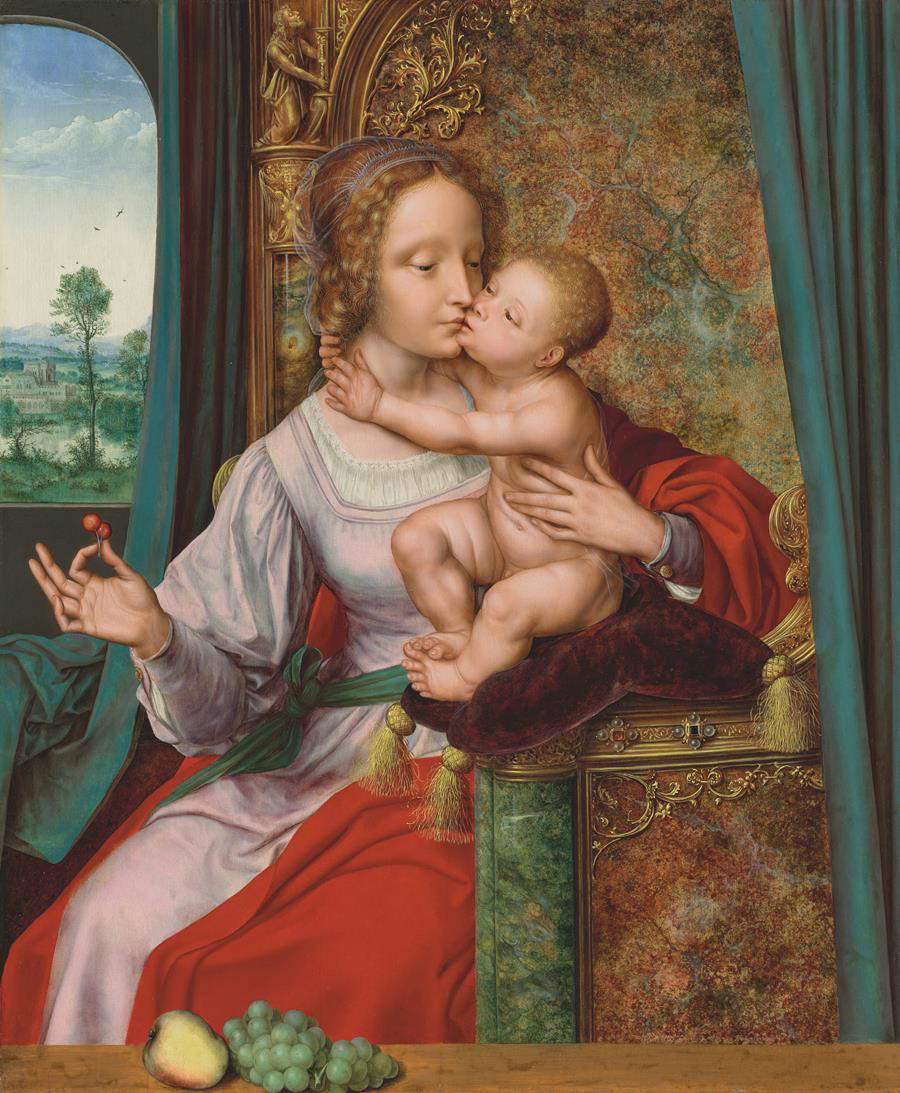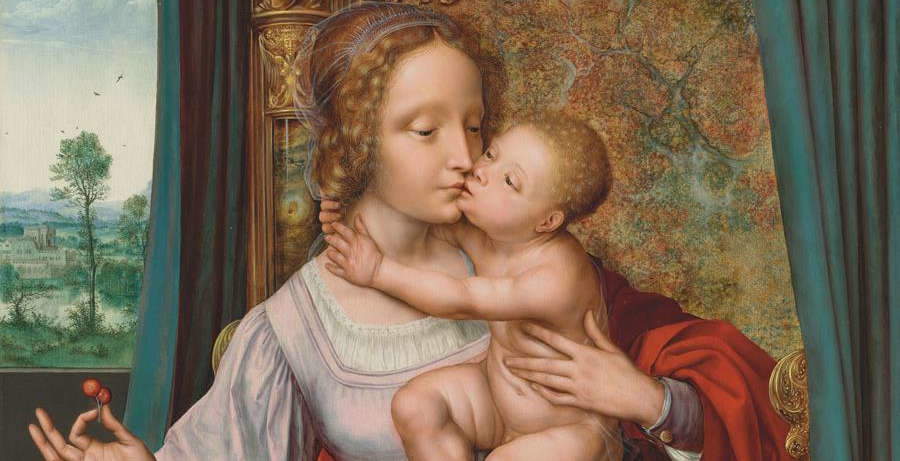Getty Museum acquires Quentin Metsys' Madonna of the Cherries
The J. Paul Getty Museum in Los Angeles has acquired at auction from Christie’s in London the Madonna of the Cherries by Flemish artist Quentin Metsys (Leuven, 1466 - Antwerp, 1530). Long thought to be lost, the 16th-century painting was recently rediscovered, and its sale at auction offered the Getty an opportunity to acquire one of the most significant Flemish Renaissance paintings to appear on the market in recent decades. The painting will be on display in the Getty Center’s North Pavilion in the coming weeks. The deal cost 10.66 million pounds (12.58 million euros).
The painting depicts the Virgin and Child affectionately embraced as they sit on a throne. Christ, depicted as a robust naked infant, wraps both arms around his mother’s neck and kisses her. The Virgin clasps him firmly to her breast and gently flourishes a sprig of cherries between the pinched fingers of her right hand. Through the large arched window on the left is visible a Romanesque palace by a lake. The first recorded owner of the Cherry Madonna was the famous early 17th-century art collector Cornelis van der Geest , who, according to contemporary accounts, resisted the archdukes’ attempts to obtain the painting from him. All traces of the painting were lost following its sale to an anonymous buyer in 1668. It reappeared at auction in Paris in 1920 but was no longer recognizable due to several additions, such as a thick layer of discolored varnish, and repainting, including a green curtain painted over the background landscape. It reappeared again in 2015 at Christie’s auction, still marred by later additions and labeled as a workshop version. After subsequent conservation treatment, which revealed its exceptional quality and state of preservation, scholars recognized it as the first version of Metsys’ masterpiece.

Quentin Metsys was Antwerp’s leading painter in the early 16th century. He was known for his compelling portraits, sophisticated use of color, and depictions of emotion and expression. Inspired by the example of his 15th-century predecessors and Italian influences, his work marked a turning point in the history of Dutch art. As Antwerp established itself as a center of artistic innovation, Metsys introduced new types of portraiture and secular painting to the region. In the 17th century he was considered the “father” of the Antwerp school of painting by collectors and leading artists of the time, particularly Pieter Paul Rubens.
The theme of the Madonna of Cherries derives from Leonardo da Vinci’s example two decades earlier. In Metsys’s painting, Christ’s lower body, particularly his heavy thighs, and the warm modeling of flesh are reminiscent of the figural types and shading of Leonardo and his students. Metsys also pays homage to the development of the theme of the Virgin and Child tenderly embraced by his contemporary Gerard David, accompanied by a still life, evident in the Holy Family recently acquired by the Getty.
Rich in symbolism, the cherries have celestial connotations as the fruit of heaven, while their color indicates the future blood of Christ’s passion and sacrifice on the cross. The still life in the foreground elaborates the theme of Christ’s future sacrifice, with a yellow apple referring to Christ’s role as the new Adam.
This is the second Metsys painting to enter the Getty Museum’s collection, following the 2018 acquisition of Vir dolorum. “The tender beauty and accessibility of Metsys’ depiction of the familial bond between the Virgin Mary and the Christ Child represents an important innovation in early Dutch painting that greatly enhances the emotional impact of the image,” say Timothy Potts, Director of the Getty Museum. "Painted at the height of his career and preserved today in excellent condition, Madonna of the Cherries is among Metsys most attractive and influential compositions. Recognized in its day as a masterpiece, the painting became especially famous in the 17th century, after which its whereabouts were lost. I have no doubt that its spiritual and artistic resonance will make it one of the most beloved works in our collection."
“This painting represents Metsys’ distinct personal style derived from his absorption of Dutch visual traditions and keen appreciation of important Italian artistic developments,” says Anne Woollett, curator of paintings at the Getty Museum. “The impressive sophistication of the subject and the very high quality of its execution support the conclusion that this panel is Quentin Metsys’ famous Madonna of Cherries.”
 |
| Getty Museum acquires Quentin Metsys' Madonna of the Cherries |
Warning: the translation into English of the original Italian article was created using automatic tools. We undertake to review all articles, but we do not guarantee the total absence of inaccuracies in the translation due to the program. You can find the original by clicking on the ITA button. If you find any mistake,please contact us.





























